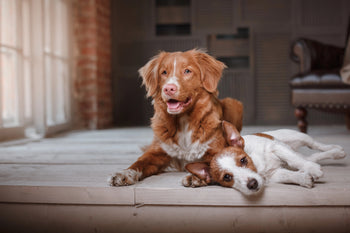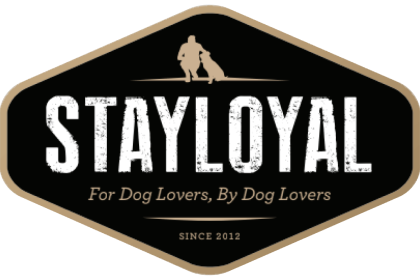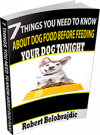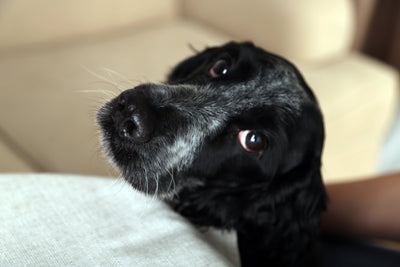How Often Do You Adjust your Dog's Food Portions?

How often do you adjust your dog’s food portions? If you answered, “Never.” This article is for you. If you answered, “When he went from ‘puppy’ to ‘adult,” this article is for you. And if you aren’t even sure why we are asking this question, then this article is definitely for you! Do you eat the same way you did as a child? As a teenager? When you were training for a marathon or pregnant? No, of course not because you know each of these life stages require different nutritional needs that kept you in shape and healthy. The same applies to your dog: How often you adjust your dog’s food portions will depend on your individual dog and the stages they go through during his or lifetime.
Remember, you’re looking to maintain that “ideal weight,” which means being able to feel the ribs and see a “waist” on your dog. Monitor your dog’s weight and check his body score off of a body comparison chart and add or subtract food to get her where she should be.
When to Adjust Your Dog’s Food Portions
From puppy to adult
We all know growing puppies need adequate food, but that doesn’t mean free feed! You should still be monitoring their weight and adjusting if you think they are not getting enough or maybe too much. This is especially important for large breed puppies. If they get too much food, extra weight can cause stress on young joints and you do not want them to grow too quickly either. When it’s time to switch to adult food, start with recommendation on the label. Then, add or subtract food to keep him at that ideal weight.
When they are spayed/neutered
Altered dogs need less calories than dogs with their hormones intact. Many dogs suddenly get very overweight after being spayed or neutered. Partly because they have some downtime after surgery, but mainly because their owners don’t adjust their food portions. As an example, a medium-sized dog that’s around 11 kg will probably need about 32 grams less of food a day once it’s been neutered, to maintain the same body condition it did when it was intact.
If they have lost or gained weight
Owning a dog means keeping an eye on their body weight and condition and adjusting food when necessary. If your dog has lost or gained weight, you may need to adjust his food. For the health of your dog, this is so important! Both weight loss and weight gain can be signs that something else is going on with your dog – from thyroid issues to cancer – so being aware of changes is very important. If adding or subtracting food doesn’t help, a trip to the vet may be in order to make sure something else is not at play.
Change in activity level
Do you have an agility dog that is injured and is now more of a couch potato? Maybe you used to take your dog on 5k runs, but you no longer have the time or are injured yourself. Just like humans, if dogs
are consuming more calories than they are burning, they will gain weight. If something has caused your dog to become less active, you will probably need to drop his food down as well.
It’s important to note this isn’t necessarily permanent. So maybe your agility dog heals and is ready to go out and run again. You may need to bump his food back up to make sure he doesn’t get too lean. Or maybe you’re a hunter who takes his dog out during the season on long, all day workouts, but then during the off season you both get a bit less active. You may be changing your dog’s portions twice a year, to account for his change in activity level. Again, it comes down to watching his weight and body condition and adjusting accordingly.
Pregnancy
This one is probably a “no brainer.” Bitches who are pregnant or nursing will definitely need more food. Talk to your vet about the appropriate increase for your dog and what her body condition should be like during and after the pregnancy. It’s not healthy for them to get too fat, either, so you need to carefully monitor their weight and make sure they are still getting a bit of light exercise. They will need more nutrition while nursing as well. Once the pups are weaned, you will need to adjust the portions again or else she will become very overweight.
When they become a senior
As your dog ages, they go through a lot of changes. Most senior dogs end up with a few health problems. Depending on the problem, you may find you are cutting their food back or bumping it up. Some senior dogs become severely overweight and are always hungry (often a side affect of thyroid issues and the medications they are on). You may find it best to add some fresh green veggies to your dog’s diet to make them feel full without adding too many calories. Others become skinny as they battle with health issues like cancer and may need you to bump up their food. Again, monitor his weight and body score and adjust according.
How much of a change?
As far as “how much to change the food by,” that’s going to depend a bit on the dog and the circumstances around why you are reducing or upping his portion. For slight changes in weight a 10-20% change in portions will do the trick. If more dramatic changes are needed, like if a dog is obese from being desexed. A 50% decrease in food is needed. After time you may find the weight reduction plateaus and even further reduction in portions is needed. It is always good to talk to a vet if you feel you are having to constantly change your dog’s food portion; they could have something going on medically. But changing portions and keep an eye on your dog’s weight can go along way to helping him live a longer, healthier life.








